Zachary Craig Hanson's Blog, page 10
October 21, 2023
Control the Inputs...
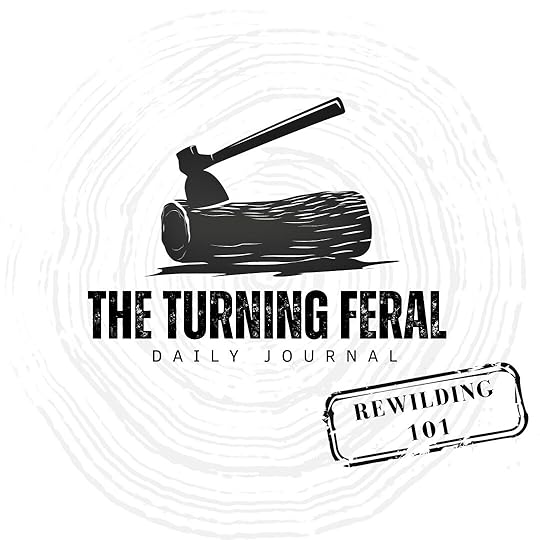
Day 9: There is a path. It’s a path laid out by something bigger than me and it’s taken me 35 years to finally give in to that power. To recognize that most things are truly outside of my control and the only thing I can control is my effort and relentlessness in pursuing the things that scratch the creative itches in my brain.
Leaning into recency bias for an example, myself and a friend hiked 10 miles into rugged country yesterday to get to a low pressure spot to bow hunt for deer. When we got there we found nothing, nada, zilch, and we were confused. It wasn’t until we started canvassing the place that we found very fresh wolf scat and a bunch of tracks - everything was blown out of that draw we worked so hard to get into.
To be honest I, for a moment, had self defeating thoughts about choosing the wrong place and being an overall “unlucky” hunter, but quickly I realized that we were alone and experiencing a cool (but frustrating) part of nature. But, the peace I was able to find came from knowing that we had put out 100% effort to get there, making me realize that we dominated the parts of the hunt we had control over.
Do I know how this “busted” trip and experience plays into the bigger plan God has for me? Not at all. Am I ok with that? You bet. And that mindset of accepting the unknown is key. It has helped me through some bigger life events recently, including losing my 9-5 job (twice in the last six months), struggling with a startup, and navigating fatherhood.
As a wrestling coach once said. “You control the input, God controls the output.”
Go control your inputs!
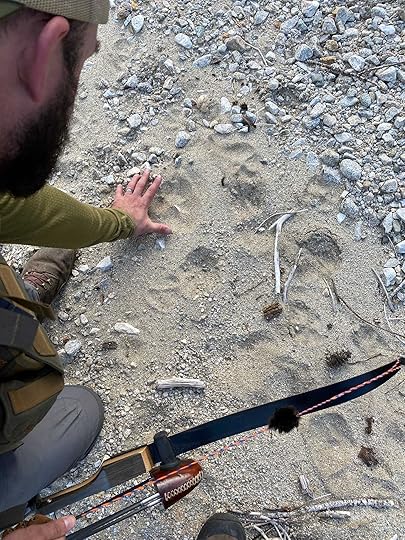 Huge wolf prints… They are not small animals.
Huge wolf prints… They are not small animals.Daily Prompt: What areas of your life do you have control over? Are you putting in max effort, or are you calling it in on most days? Write down a few areas where you could uplevel your “input.”:
Motivational Passage:
“Where the legs have gone the hind legs must follow”
― Leo Tolstoy, Hadji Murád
Rewilding Action: If you are planning to be out in nature for extended periods on your own turning feral journey, think about some phrases or motivational quotes that resonate with you. Start telling them to yourself all the time. Program your mind. These phrases repeated to yourself when you are alone, tired, or questioning your “why” can really help. A few I have used over the past 10 years come from several sources, but include, “Control your inputs,” “Not dead. Can’t quit,” and “Lookin’ good, feelin’ good, oughta be in Hollywood.”
October 20, 2023
Get out. Move.
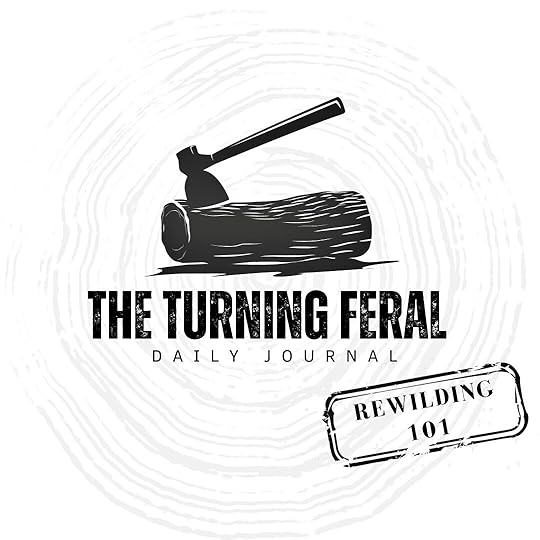
Day 8 - “Get out. Move.” Those are words that I took to heart from a close friend who grew up navigating the woods. It’s so simple, yet profound, and I didn’t really digest its gravity until I had been on my Western journey for a few years.
The impact of those words only hit after I began to become comfortable in my new and wild environment. Over time I found myself frequenting the same areas, the same draws, and the same sections of river. Unbeknownst to me, I fell into the same trap that I had while living in my suburban 9-5 world – I let comfort and familiarity creep in.
Now. There is nothing inherently wrong with this. We all seek comfort in our surroundings, and being comfortable in a wide open and natural place was amazing (and better than the suburban alternative), but I was still stagnating my own growth potential by not getting out further, not pushing over that next ridge line, and not accepting that at times I just needed to “Get out. (and) Move.”
Daily Prompt: What areas of your life are you stagnating in? Where do you find yourself gravitating back toward because of its familiarity? What areas could you benefit from by “getting out and moving around somewhere (or some concept) new?”:
Motivational Passage:
He who climbs up the highest mountains laughs at all of the tragedies, real or imagined.
-Friedrich Nietzsche
Rewilding Action: If you are sitting at your desk on this Friday morning, take some time to look up local state parks near you. Find somewhere you have never been and go there. Walk around, track how the newness and unfamiliarity makes you feel, and be in the moment of feeling “out of place.” Do you feel engaged? Scared? Curious? Take it in and try to make this a monthly exercise.
Thanks for reading Let Me Die Learning Daily Devotional! Subscribe for free to receive new posts and support my work.
October 19, 2023
Functional Backcountry Fitness is Truly do or die!
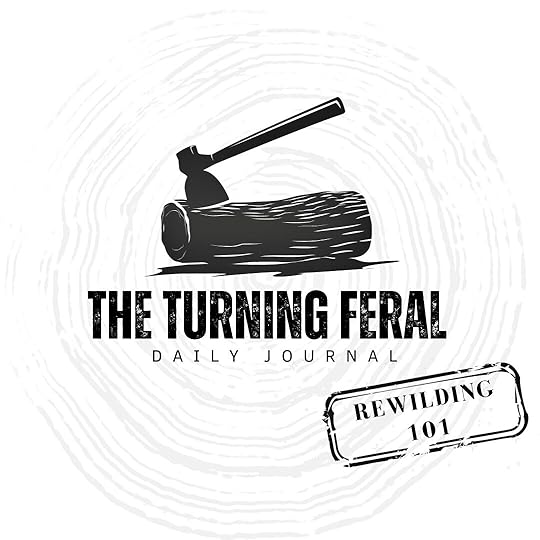
Day 7: I have always valued fitness. It’s something that was ingrained in me at a young age by my father. He never forced us to workout, but I remember waking up to him coming into our rooms drenched in sweat and smelling strongly after going for a run - a true lead by example approach. Then, as I got older, I watched one set of fit-focused grandparents age more gracefully than the other who took retirement as a means to spend more time on the couch. It made me realize that moving our bodies and taking (relatively) good care of them is important. So, for years I focused on martial arts and “functional” fitness through crossfit-esque regimes.
However, it wasn’t until I started living in the mountains that I really figured out what people meant by functional fitness. It turns out that no amount of crossfit can *perfectly* prepare you for the wide range of tasks required to be a backcountry homeowner, hunter, and trapper…
So, it took some adapting and task-specific training experimentation, but the 3 main movements for the kind of lifestyle I’m living around sustainability are definitely lunges, pull-ups, and weighted rucking. I’ve also found beauty in allowing some of my hobbies and chores to turn into actual workouts themselves and not beating myself up for missed “gym” days. Things like carrying rounds of wood to the truck from a far distance, hikes with the kids with extra weight, mounting trail cams on steep hillsides, carrying traps deep into the backcountry on snowshoes, and the list goes on.
I talk about my perspective on this topic in an interview with MTNTOUGH Fitness, which you can watch below:
Daily Prompt: Where are you on your current fitness journey? What movements can you start to incorporate into your daily routine to prepare you for the sustainability-related things you want to do in the future? Will you need to haul 5-gallon buckets of water (fitness translation: farmers carries)? Will you need to hike miles through the mountains (fitness translation: lunges)? Think about where you want to be and what you need to start training your body to do and write it down here:
Motivational Passage:
Your daughter needs the best of who you are: your strength, your courage, your intelligence, and your fearlessness. She needs your empathy, assertiveness, and self-confidence. She needs you.
Meg Meeker - “Strong Fathers, Strong Daughters”
Rewilding Action: If you are struggling to find your fitness foothold for living a sustainability-friendly lifestyle there are plenty of resources. You can join MTNTOUGH fitness and follow their MGD program like I do, follow Michael Easter for rucking advice, follow Jason Khalipa for real functional “dad” crossfit, or simply get out and swing an axe. The options are endless, but it’s important to get out and find what movements and programs will help you achieve your goals.
Thanks for reading Let Me Die Learning! Subscribe for free to receive new posts and support my work.
October 18, 2023
What will you do when the water turns off?

Day 6: You can lead a horse to water, but you can’t make him drink is a saying as old as time… But, you definitely can’t make a horse drink if there is no water! And, recently we had our first experience without running water and it was eye-opening as to the impacts and need for us to better prepare for a water-less situation.
Let me give some context. I am fortunate enough to have grown up in the United States at a time where no matter where I went, I could turn on a water faucet and expect clean and potable water. It didn’t matter if it was from a garden hose, a restaurant, or an office building water fountain. I came to expect that water was just always there and always safe to drink.
This expectation saw its first cracks when I started to travel the world for work and pleasure. I found out the hard way in Central and South America that you should boil your water before drinking it, and when I lived in Central Asia there were “blackout” periods during the day where the local government would shut off water between 9 am and 5 pm. But, even with these experiences, the second I came back to the homeland my concerns were literally washed away by the free flowing tap.
So, when we moved to the woods in a town of 35 people, water wasn’t my first or biggest concern. In fact, we had a small water co-op with a catchment and treatment system that supplied the town for a reasonable rate. Yet, with that comes maintenance of an aging system… and this past summer with two babies in diapers and drinking from bottles, we found out how hard things can be if you don’t have a “plan” for backup water when we went to our tap, turned the handles, and were greeted with the sound of air escaping the pipes.
Luckily, we live in a place that has potable natural springs nearby and we were able to cobble together enough plastic containers to drive the mile or so to the springs and bring them back to have enough water for drinking and cooking. These trips took up a large portion of our day and we got a real intimate view into how much water we use day in and day out… Spoiler alert, it’s a lot!
After a few days of sponge baths for the kids and all focus moved toward hauling water, the system was restored and we were back to normal… but, not without a fresh look into what we needed to change in order to be more resilient for when this inevitably happens again. (PS: we now keep several 5 gallon potable water jugs on hand at all times and I’m looking into getting a water diviner to come see if we have access to a well).
Prompt: Where do you live? What would happen if your water turned off today and stayed off for 5 days? Would there be a fight at the grocery stores for the last of the potable water? Would you shelter in place or try to evacuate somewhere else? Think about how quickly things would deteriorate in that situation. With that in mind, are there things you can do to mitigate that risk?:
Motivational Passage:
For I will pour water on the thirsty land, and streams on the dry ground; I will pour out my Spirit on your offspring, and my blessing on your descendants.
Isaiah 44:3
Rewilding Action: When it comes to having the most essential human need, water, there are things you can purchase now to ensure you have a clean safe source for short amounts of time. Of course, you can keep potable drinking water in jugs, but you can also purchase items to help clean dirty or saline water. Things like iodine tablets, desalinators, and water purifiers exist online and do not break the bank. My favorite tool right now is the life straw brand water bottle (which I take on backcountry hunts) and their larger water purifier. Keeping something like this on hand could be a real lifesaver if your main water supply is cut off.
October 17, 2023
Without a community, you will fail.
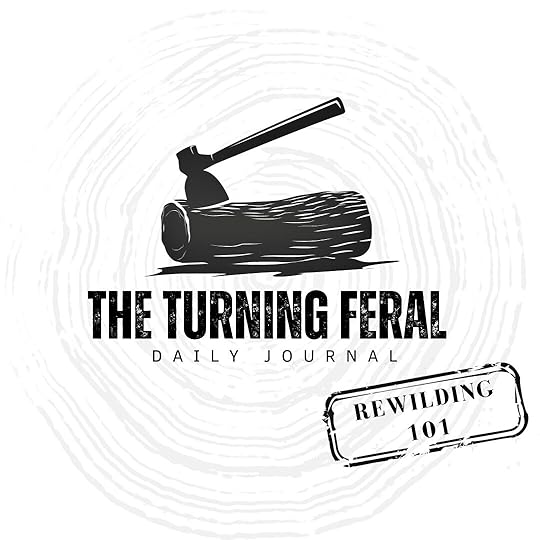
Day 5: Family, friends, and community. Those are often overlooked elements to beginning a self-sustainability journey. I, for one, fully ignored those three elements when I first became motivated to try and move away from society. Instead of seeking help from others and building a community to grow with, I was fueled by the anger of a recent divorce.
Like many young men, I had “had it” with society and the life I was told I needed to live. So, instead of focusing more deeply on my family, friends, and community, I shunned them and set out on a solo adventure with the mindset of “do or die.”
Thankfully for me (with the clarity of hindsight) the woods and general self sustainability is a master at serving out humble pie for free, every single day. It turned out that without family, friends, and a community to lean on, I was actually slowing my progress to learning the skills that I was so desperate to acquire. I would spend hours trying to do a task when it would have taken 10 minutes for me to walk to a more knowledgeable neighbor and learn that skill the appropriate way… and they were willing to teach!
Yes, the woods helped quickly break down my own ego and forced me back into recognizing that family, friends, and community are not only a component of learning to be more feral, but an absolute prerequisite.
 Local Atlanta Fire and SAR community (I am furthest right)
Local Atlanta Fire and SAR community (I am furthest right)
 My hunting and fitness community
My hunting and fitness communityDaily Prompt: Who is in your close family and friend circle? Does this community align with where you want to be on your self-sustainability journey? Can you actively share and learn skills within this community, or can you get together today to start a community garden or small trade circle? If you don’t have a small “tribe,” how can you go about starting one?:
Motivational Passage:
And let us consider how to stir up one another to love and good works, not neglecting to meet together, as is the habit of some, but encouraging one another, and all the more as you see the Day drawing near.
Hebrews 10:24-25
Rewilding Action: Whether you have a strong self-sustainability community to tap into or not, take action today. Start a local gardening club, join a shooting club, or call up your mom and ask her how she used to make her sourdough bread. Been curious about a specific topic? Follow someone new on instagram and reach out with questions you may have been too embarrassed to ask in the past. Remember, we all start somewhere.
October 16, 2023
The Turning Feral Journal - Day 4
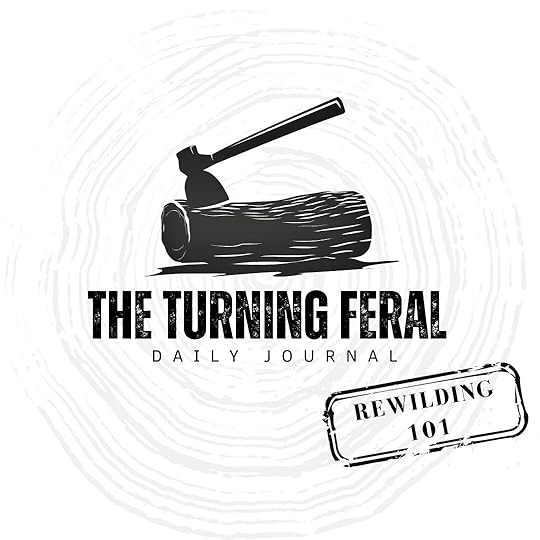
Day 4: Responsibility. Responsibility is a major motivating factor to force the learning of self-sustainability. For me, when I moved to the woods I had only myself to care for. I had responsibility to provide the basic necessities like warmth, food, and shelter, but the degree to which I had to provide those things was flexible because I wasn’t looking for creature comforts. In fact, I was often intentionally seeking out discomfort.
However, once I met my wife and quickly started having kids and forming a little off-grid family, the weight of true responsibility set in. Now I wasn’t just responsible for myself in a remote and oft-dangerous environment, but I had a (very capable) wife, a small infant, and another on the way.
That introduction of needing to care for so many people in an environment that I was still learning to operate in was terrifying. Now my hunts weren’t just for fun… they were to provide food. Cutting trees for firewood wasn’t a vanity muscle exercise anymore, but a way to ensure my daughter would stay warm when it was -14*F and snowing. Maintaining the snowmobiles wasn’t about retaining their value as much as it was about keeping them running in case of a winter-time emergency. The list goes on and on and on… but, you get it.
This need to provide and bring stability to those closest to us is an amazing well that we can all tap into, and is one of the things I chatted about with my buddy Kyle Kingsbury on his podcast recently (clip from the episode below).
Daily Prompt: What sense of responsibility do you have in your life? What would happen to those you are responsible for if the things you depend on for food, shelter, and community were no longer available? Are there things you could be doing today that could help you ease that burden?:
Motivational Passage:
An overseer, then, must be above reproach, the husband of one wife, temperate, prudent, respectable, hospitable, able to teach, not addicted to wine or pugnacious, but gentle, peaceable, free from the love of money. He must be one who manages his own household well, keeping his children under control with all dignity.
1 Timothy 3:2-5
Rewilding Action: Take time to list out all of the areas of your life that rely on things outside of your control. Where does your electricity come from? Where does the majority of your food supply originate? When you turn your faucet on in the kitchen, where does that water come from? As your list grows, you can start to think about how you may mitigate the impact to those you are responsible for and a gold star to those who already have some plans in place!
October 15, 2023
The Turning Feral Journal - Day 3
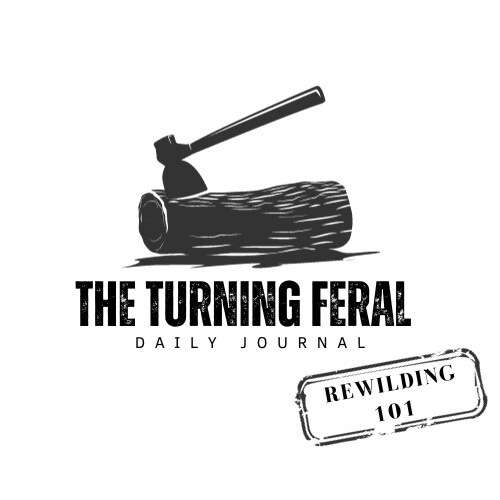
Day 3: In my journey from suburbanite to pseudo-mountain man, I was fortunate enough to have some confidence when I entered the woods. It wasn’t because I had vast experience in the woods, that I knew how to start a fire, or that I could track an animal – In fact, I had none of those skills… but, what I did have was training in firearms. Why did this give me confidence?
Well, though I had to fill all of the other knowledge gaps to survive in the woods, I knew that I could confidently carry a sidearm with me and at a minimum have a decent chance at repelling a predator (think bears, wolves, mountain lions) if attacked. The beautiful thing about learning the skill of carrying and deploying a sidearm is that it has just as much practical application living in an urban setting as it does in a rural setting… maybe even more so.
Daily Prompt: What skills could you start to perfect now that could translate to a survival situation? How can you go about learning those skills and what’s holding you back?
——————————————————————————————————————————————————————————————————————————————————————————————————————————————————
Motivational Passage:
When a strong man, fully armed, guards his own palace, his goods are safe.
-Luke 11:21
Rewilding Action: There are a ton of great resources out there to learn the basics of handgun and long gun basics. I would highly recommend going to a sheepdog response or fieldcraft survival seminar, but there are many that can be found locally if traveling is not an option.
Thanks for reading Let Me Die Learning! Subscribe for free to receive new posts and support my work.
October 14, 2023
The Turning Feral Journal - Day 2
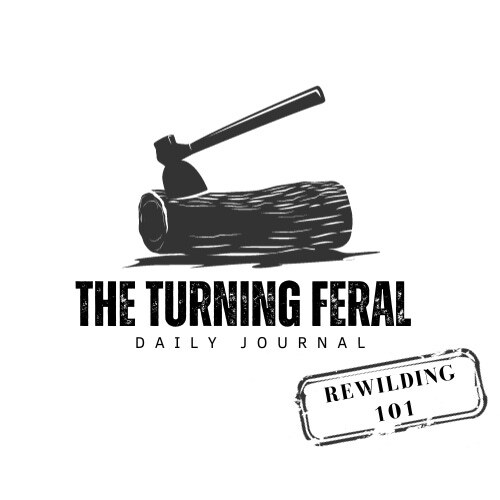
Day 2: One of the hardest things for me to come to terms with as I began my journey to the wilderness was exposing my own deficiencies as a man. By modern standards I had everything… A nice suburban home, a marriage (which was on the rocks), health, a growing 401k, and job stability. Despite this “success,” I was constantly ignoring a pull in my soul to become more self reliant, and this lack of self reliance was exposed to me day in and day out in my modern living. If I had a broken toilet I would call a plumber without even investigating the issue. If I needed my oil changed I would drive to an auto dealer. If I needed food I would go to a grocery store.
Yet, with everyone one of those “easy button” calls I made to fix my problems, I was actively ignoring my own personal desire for self reliance. Why? If I’m being honest, it was purely to preserve my ego. Every time I had to call that plumber for a simple fix, call the pest control company, or drive my car to a dealer for an oil change I was exposing rats in my own personal cellar… and instead of addressing those “rats,” I would just willfully ignore them. I did this because if I actually acknowledged those rats, it would be an admission that despite all of the “things” I had attained on a path to “success” I had, in actuality, neutered myself as an independent man — If I addressed them, I would have to admit that I was fully reliant on so many other people and systems to continue living the cushy lifestyle I had built for me and my family.
Daily Prompt: As you begin your own journey toward self reliance, what rats are you hiding in your cellar? What things are you ignoring that are preventing you from being where you want to be on the self-reliance spectrum? Is it growing your own food? Physical health and strength? Something else?:
——————————————————————————————————————————————————————————————————————————————————————————————————————————————————
Motivational Passage:
“On the other hand, surely what a man does when he is taken off his guard is the best evidence for what sort of man he is? Surely what pops out before the man has time to put on a disguise is the truth? If there are rats in a cellar you are most likely to see them if you go in very suddenly. But the suddenness does not create the rats: it only prevents them from hiding. In the same way that suddenness of the provocation does not make an ill-tempered man; it only shows me what an ill-tempered man I am. The rats are always there in the cellar, but if you go in shouting and noisily they will have taken cover before you switch on the light.”
-CS Lewis
Rewilding Action: Though today’s journal prompt is all about exposing metaphorical rats, one thing that many people deal with whether they live in an urban or rural environment is pests! If you have dealt with bugs or rodents, maybe it’s time you take your own action to control them instead of calling a pest control company. This was something I had to do when I moved to the woods in order to prevent mice from breaking in and chewing up our backup food supply. You can read an article on how to build your own mice catching device here.
Thanks for reading Let Me Die Learning! Subscribe for free to receive new posts and support my work.
October 13, 2023
Rewilding Devotional - Day 1
Hey, everyone — I have been asked repeatedly over the last year about how I “turned feral.” People were excited about the book I wrote, but were yearning for something actionable… something they could follow daily to start introducing a little bit more wildness into their day-to-day lives.
So, I decided (admittedly for some selfish reasons) to start a daily “rewilding devotional.” This will be 365 days of reflection around what it means to introduce more resilience, self-sustainability, and little actions to take to start your own journey toward turning feral.
For those who aren’t interested in these daily prompts, I would suggest unsubscribing to avoid any spam, but for those who are up for some learning and motivation… stick around and share with a friend!
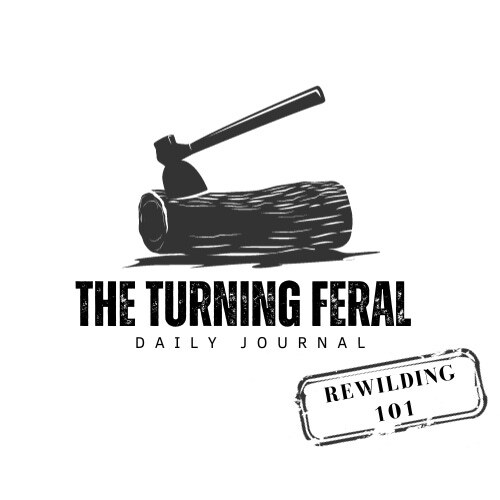
Day 1: There is an old saying that a journey of a thousand miles starts with one step. Yet, if you are a thousand miles from where you want to be in life, it is easy to discount the value in taking one step in the direction you want to go. It is even easier to push off the entire journey for days or even years if the destination is blurry or unclear.
But, by starting this daily affirmation and reflection journal you are taking action to bring your destination into focus and committing to taking that very first step. So, let’s buckle up and begin our exploration in finding ways to embrace a more “wild” life no matter where you live…
Daily Prompt: What is your destination? Where do you want to be at the end of the next 365 days? Do you want to be more self-sufficient? Do you want to harvest an animal? Do you want to grow a garden? Whatever it is, take the time to envision your end-goal and write it down here:
____________________________________________________________________________________________________________________________________________________________________________________________________________________________________
Motivational Passage:
He found him in a desert land,
And in the howling waste of a wilderness,
He encircled him, and cared for him.
- Deuteronomy 32:10
Rewilding Action: A simple and inexpensive purchase to make to help in a journey of self sufficiency is to purchase a survival pack of heirloom seeds. You may not know how to plant, raise, or care for these plants (yet), but having them on hand can build your resilience and confidence. Packs of seeds can be bought in a variety of sizes and can sit in your closet for years. Here is what I purchased: Open Seed Vault Starter Kit
July 31, 2023
Amateur Taxidermy
On May 5th of this year, I lost my job. This was an unexpected outcome that my family did not see coming and consequently we did not have as much “runway” as we would have liked entering into such an event. But, instead of licking my wounds and wallowing in self-pity, I decided to go to work learning a skill that I have long wanted to perfect… Hide Handling & Taxidermy.
In less than 24 hours from losing my day job I was walking into one of Boise’s premier taxidermist shops where the owner welcomed me (and my free labor) with open arms. With no fan fare we went straight to work on some elk, gemsbok, bear, turkey, and some moose. As with most great teachers, we focused on the basics and began to slowly build from there with a focus on how my efforts could help my upcoming fall trapline fur-handling:
StitchingYou may recall an old post of mine where my wife began to teach me to sew last year… Well, unfortunately I did not practice at all since then and my first day in the taxidermy shop made me regret it. My mentor and I spent the whole first morning repairing small holes in wet-tanned hides that would soon be going on mounts. After he (re)taught me the basics of whipstitching with a high-grade clear fishing line, he taught me how to clean up bullet wounds by cutting a nice oval shape that would cinch up better when sewn.
Custom FormsOne of the most impressive things for me was to learn that taxidermy (good taxidermy anyways…) is not just about throwing tanned hides onto a foam form and calling it good. No, each of these foam forms needed extensive modification to create a life-like representation of the animal that a customer has brought in. For instance, we began to work on an African Gemsbok for a customer and my mentor threw the wet hide on the form and began pinning it into place. To me it looked amazing… the nose seemed to fit well, the skin wasn’t excessively stretched, and I’ll be damned if draping that hide over the form didn’t make it look like a real gemsbok!
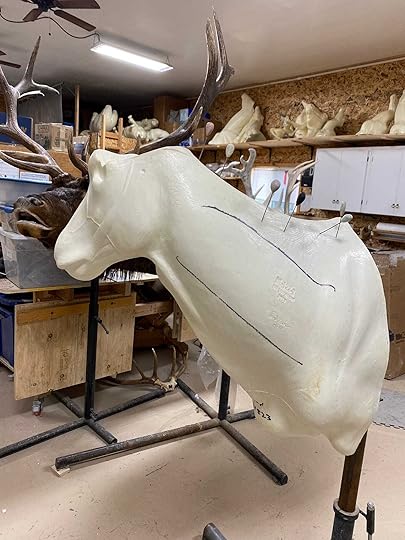
Yet, my mentor wasn’t smiling. Instead he pulled the hide off, grabbed some markers, a saw, a drill, and a few different chemicals. Soon we looked more like Walter White and Jesse as we lopped the head of this gemsbok, built some small foam spacers, and re-attached the pieces with some screws. My mentor began explaining to me that these forms are guidelines and to be great you have to go the extra mile. In this case we had two different alteration to lengthen the neck and nose of the animal. To extend it, we mixed chemicals to create foam (similar to the insta-foam spray you can buy at home depot) and poured it into our duct-tape mould.
Once poured, cured, and shaved down, we were able to refit the hide to the form to my mentor’s satisfaction. Which led us to our next problem - fitting the horns in such a way that the 90* turned mount would fit on a wall. For us, it turned out that the long horns of this gemsbok were about an inch too long and would hit the wall without more alterations. So, it was back to the saws, foam, and spacers once more until we had the form perfectly customized to fit the customer’s desires. Within a day or two of this customization we were staring at a beautiful mount that was getting finish work!
Bear Hide WorkOne of the great things about being fired in May was that it was smack-dab in the middle of spring bear hunting season. This meant that I could be out in the woods more, but it also meant that while I was in this taxidermy shop I was able to learn and refine my skills at skinning bears (You can read my home bear skinning and tanning series here)!
Though I have done this a few times before, the refinement and approach to cleaning hides that I learned while in a professional shop was top-notch. First and foremost we covered de-bugging/ticking the hide. Each hide that came in got a nice spray down with a bug killer that wouldn’t effect the fur and went straight into the freezer. After a day or two we would pull them out to thaw before getting to work.
The biggest takeaways on cleaning up bear hides for me were small. My mentor worked over small fleshing beams for the majority of the work and used a beaver knife (which he sharpened regularly) to work the meat and remaining fat from the hide. He also used a chainmail glove so he could pull the hide taught without risking an accidental stabbing.
Other genius tricks were leveraged to flip ears. This is something I have always struggled with on my own critters and my mentor had a solution… a custom wire device that you could jam into the ear to start clearing cartilage without the need to use your fingers for pressure.
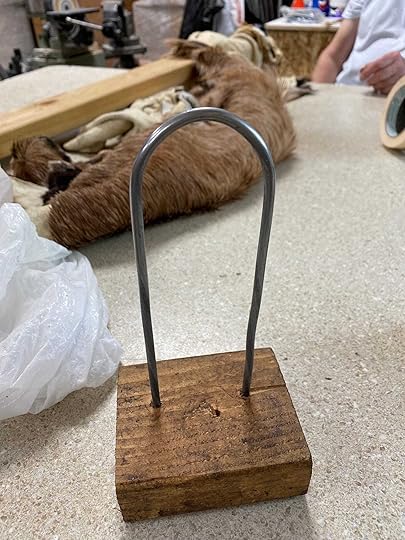 Custom ear-flipping tool
Custom ear-flipping toolHe was also a magician at deboning bear paws. For reference, it took me about 2 hours per paw when I deboned my own… It took my mentor 5 minutes. The education he gave me around the approach and how to easily navigate each knuckle was invaluable.
Then, once we had deboned, removed skulls, fleshed the hide, flipped ears, lips, and noses, we took them out to the salt shed. What did we do in the salt shed? Well, we buried each hide in a metric ton of salt. What’s funny is that when I salted my first hide I thought I was being liberal with the salt, but boy was I wrong. It turns out it’s nearly impossible to over salt a hide, so the best bet (especially if doing this in bulk) is to immerse these puppies fully - which is what we did. Once they sat in the salt for a few days to dry out, we would pull them to hang before packaging them up to be sent off to the tannery.
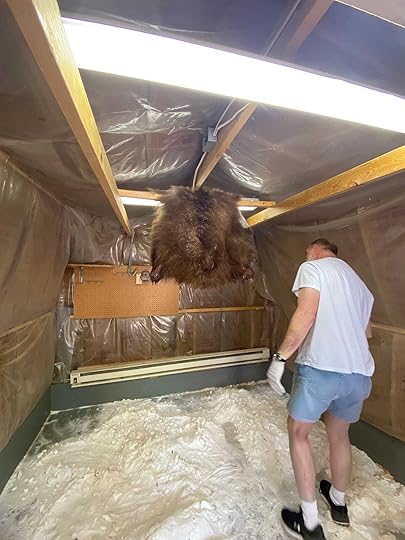 Hanging a hide before sending to tanneryOther Work
Hanging a hide before sending to tanneryOther WorkIt’s nearly impossible to cover everything that my mentor flooded me with in the short few weeks I was working with him. However, some of the things we did cover were home tanning (for my own furs), fixing up janky euro mounts and the finer points of beetles, more sewing, turkey mounts and cutting off spurs, and some of the artistic finish work. What I can say is that I am more prepared to go into this trapping season and come out the other side with better pelts, which is a massive win, but it has also fueled me with the desire to learn more about taxidermy and potentially go to a school!
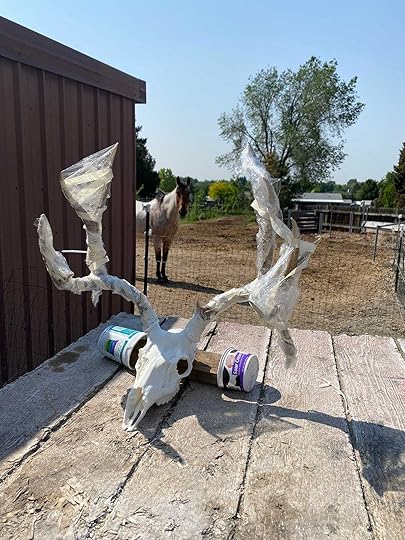 Fixing a customer’s drop tine euro-mount which had been trashed
Fixing a customer’s drop tine euro-mount which had been trashed



